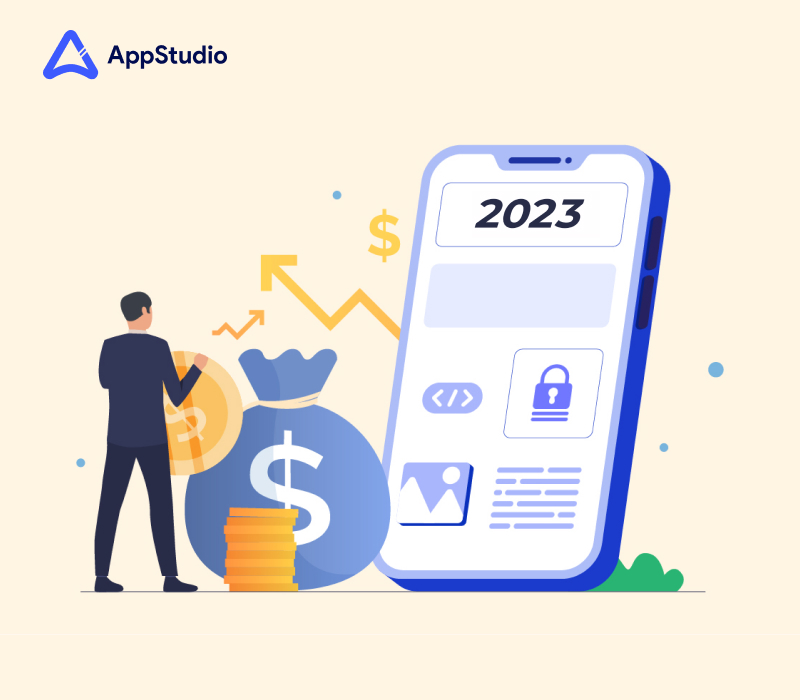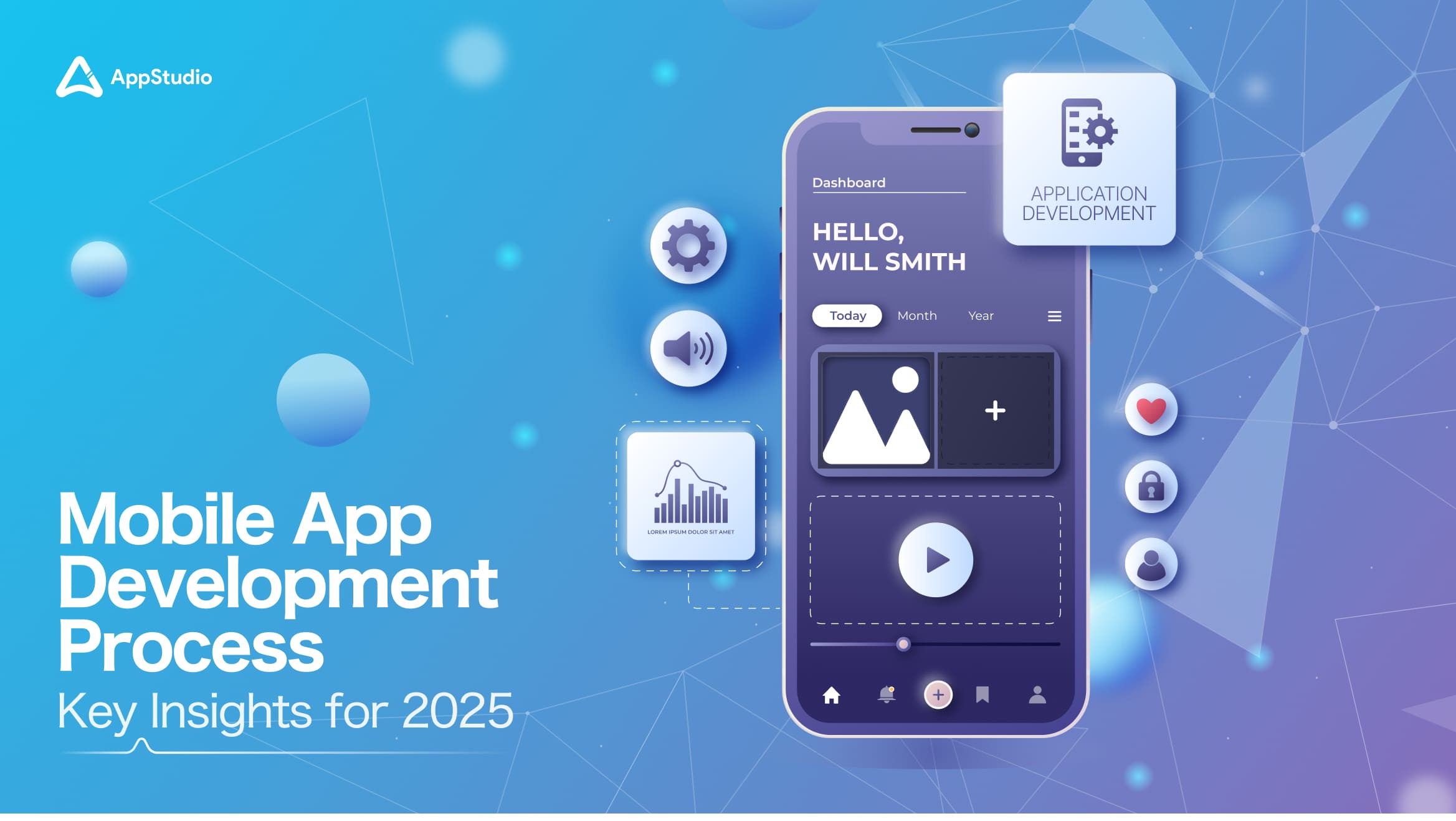As of now, there are 6.92 billion smartphone users across the world, which translates to approximately 85% of the global population. And the numbers are increasing at a fascinating pace.
Around 9 million mobile apps currently exist, enabling smartphone users (both Apple and Android ecosystems) to buy/sell products online, avail services, get connected with one another, play games, watch movies, and listen to songs.
From enhancing customer engagement to streamlining operations, a well-designed mobile app can offer a plethora of benefits. However, the process of developing a mobile app can be complex and costly, often causing concerns for entrepreneurs, CTOs, and decision-makers.
The good news is that with strategic planning and the right approach, you can embark on a budget-friendly mobile app development project without compromising on quality.
You can also read – React Native’s New Architecture Decoded: How to Migrate & Benefits?
In this blog, we’ll explore step-by-step how to plan such a project while providing real-life examples to illustrate key points.
1. Define Clear Objectives and Scope
The foundation of any successful mobile app project lies in defining clear objectives and scope. Start by understanding the core purpose of your app, whether it’s to increase sales, improve customer experience, or optimize internal processes. Once you’ve established the main goals, outline the features and functionalities your app will need to achieve these objectives.
Live Case Study: When we developed “Settlyt”, a new-age, innovative fintech application for making, tracking, and resolving everyday bets and challenges with friends, we brainstormed ideas with the client, and got a clear picture of their objectives and mission, that helped us to formulate a crystal-clear development plan.
2. Prioritize Features Strategically
While it’s tempting to include a multitude of features in your app, a budget-friendly approach requires careful feature prioritization. Identify the core features that align with your app’s objectives and provide the most value to users. Consider using techniques like the MoSCoW method (Must have, Should have, Could have, Won’t have) to categorize features based on their importance.
Live Case Study: “TravelEase,” a travel planning app, aimed to assist users in creating itineraries. The team decided that real-time flight tracking (Must have), in-app messaging (Should have), and social media integration (Could have) were essential features to include. This way, they prioritized their app development process and ensured high engagement and user activities.
You can also read – How Much Does It Cost to Build An App Like Threads?
3. Choose the Right Development Approach
The development approach you choose can significantly impact your project’s budget. You have three main options: native, hybrid, and progressive web apps (PWAs). Native apps offer the best performance and user experience but may be more expensive due to multiple codebases. Hybrid apps strike a balance between cost and performance, while PWAs are cost-effective but might have limitations in functionality.
Live Case Study: “EcoShop,” an e-commerce startup, wanted to develop an app to showcase its products. They opted for a hybrid approach to ensure a balance between performance and budget.
4. Research and Select the Right Technology Stack
Choosing the right technology stack can streamline development and reduce costs. Research and select technologies that are well-suited for your app’s requirements. Consider factors like ease of integration, scalability, and the availability of skilled developers in your chosen stack.
Live Case Study: While developing a restaurant aggregator app, the developers needed to offer real-time location tracking. They chose a technology stack that included React Native for the front end and Node.js for backend development, enabling seamless integration of geolocation services. In case they used other backend technologies, then deploying geo-location services could have been a challenge.
5. Collaborate with a Reputable Development Partner
Partnering with an experienced app development company can be a game-changer. Look for a partner that aligns with your vision, has a strong track record, and offers flexible engagement models. An established development company can help you navigate challenges and optimize the development process.
Live Case Study: The founders of MindSet, the go-to destination platform for resorting to the world’s best motivational, inspirational, and educational audio collaborated with Zazz, a leading mobile app development that had expertise in this domain. This partnership ensured the app’s features aligned with industry best practices.
You can also read – A Detailed Guide to Industrial IoT – Major Challenges & Solutions
6. Embrace Agile Methodology
The Agile methodology promotes iterative development and allows you to adapt to changes more effectively. By breaking down the project into smaller sprints, you can continuously evaluate progress, receive feedback, and make necessary adjustments, all of which can lead to cost savings in the long run.
Live Case Study: “Skills Ontario,” a seamless app helping stimulate employability skills development in Ontario’s youth, adopted Agile practices to incorporate user feedback at regular intervals. This approach helped them refine the user interface and prioritize functionalities and features, based on user preferences.
7. Test Rigorously
Thorough testing is crucial to ensure your app functions as intended and is free from critical bugs. Conduct comprehensive testing at each stage of development, including unit testing, integration testing, and user acceptance testing. Identifying and fixing issues early can prevent costly rework later in the process.
Live Case Study: “MedTrack,” a medication reminder app, conducted extensive testing to ensure accurate notifications and compatibility across various devices. This proactive approach saved them from dealing with user complaints post-launch.
8. Plan for Scalability
While your initial app might start with a limited user base, planning for scalability from the beginning can save you from major redesigns in the future. Choose an architecture that allows for easy scaling as your user count grows. Cloud-based solutions can provide flexibility and cost-efficiency in this regard.
Live Case Study: “RideWave,” a ride-sharing app, anticipated exponential growth. They selected a cloud-based architecture that could handle increased demand during peak hours without compromising on performance.
9. Optimize User Onboarding and Experience
A seamless user onboarding process and intuitive user experience are vital for app success. Invest in a user-friendly interface that guides users through the app’s functionalities without confusion. An intuitive experience can reduce support requests and contribute to user satisfaction.
Live Case Study: “CookBuddy,” a recipe app, focused on a clean and straightforward onboarding process. Users were greeted with a quick tutorial highlighting key features, leading to higher user engagement.
10. Plan for Post-Launch Maintenance
The launch of your app is just the beginning of its lifecycle. Allocate a budget for post-launch maintenance, updates, and improvements. Regularly monitor user feedback and app performance to identify areas that require attention. Neglecting post-launch maintenance could lead to user dissatisfaction and hinder long-term success.
Live Case Study: “PetCare,” a pet health tracking app, continued to release updates based on user feedback and changing industry regulations. This proactive approach ensured the app remained relevant and useful.
In conclusion, a budget-friendly mobile app development project is attainable with meticulous planning and strategic decision-making.
You can also read – What Is App Monetization? What Are The Best Strategies For Generating Maximum Income From App?
By defining clear objectives, prioritizing features, choosing the right development approach, collaborating with experts, and embracing Agile practices, you can create a successful app without breaking the bank. The key lies in making informed choices that align with your business goals while keeping an eye on long-term sustainability.
Consult with our mobile app development experts at AppStudio and find out how we can help you to conceptualize, develop and launch a budget-friendly mobile app, with meticulous planning and cost control.



